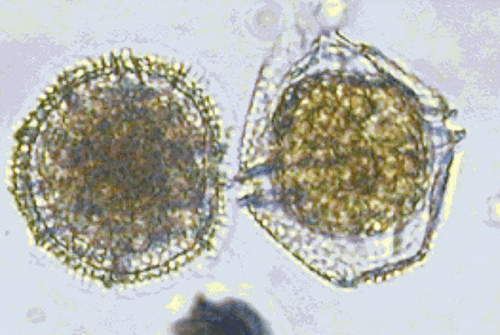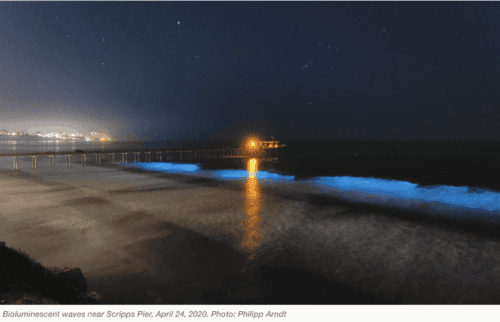Coastkeeper Science Advisor Jim Perry sheds some light on a phenomenon occurring up and down the Southern California coast. Jim is the director of the cardiac electrophysiology and adult congenital heart programs at Rady Children’s Hospital, and the co-founder of two chapters of Surfrider Foundation.
—
What’s the story with Red Tide?
Much of the coastline of Southern California, down into Baja, is experiencing a large algae bloom called a red tide. The aquatic organism underlying this phenomenon is one of the many species of plankton, a dinoflagellate called Lingulodinum polyedra.


Dinoflagellate comes from Greek words for whirling (dinos) and whip (flagellum), which describes how these plankton swim, by whipping a tail like structure in the water. (Although the word plankton itself is derived from other Greek word for “drifter” because most are carried along completely or in part by ocean currents.) Some dinoflagellates have a symbiotic relationship with reef coral and provide the majority of their photosynthetic ability. Loss of this ability, due to ocean acidification, leads to coral bleaching and coral mortality. Salt water plankton live near the ocean surface and some swim deeper in the evening.
So, first, what’s plankton?
Plankton are the foundation of oceanic life. There are phytoplankton, which tend to be more plant-like, and zooplankton, which are more animal-like. Some forms, like the dinoflagellate one offshore right now, fall somewhere in between. Phytoplankton are microscopic and cellular and occur naturally. They are a food course for whales, shrimp, and jellyfish, among others. When their numbers suddenly increase, when conditions of temperature, ocean alkalinity, and nutrients are right, there can be an explosion of growth and a “bloom” happens.
What makes the bloom happen?
The red tide blooms here tend to occur in the Spring or late Summer. These events can occur naturally, but can be augmented by runoff from the land of nutrients for algae, like those found in fertilizers. On sunny days the organisms swim to the surface, giving the appearance of a dense color and “red tide.” Red tides, or algal blooms, aren’t always a bad event or a health hazard. In fact, it’s a burst of food supply for many forms of ocean life. However, some species, but not all, can produce a toxin that can be harmful to both sea life (fish and birds) and humans. A neurotoxin can be deadly and can be accumulated in shellfish that take in ocean water and filter and concentrate the toxin as well. This can occur even without a bloom event. This is not the case for our local, southern California phytoplankton. However, when large numbers of plankton die off, they can reduce the oxygen content in the water, causing aquatic life to leave or die.
The red tide is red, because the plankton have pigment in them that they need to capture sunlight and convert sunlight into chemical energy through photosynthesis. The pigment can appear red, or brown, or copper, or yellow, depending on the specific species and the angle of light. Red tides can last unpredictable lengths of time, from days up to more than a month. Last summer, in June, we had a red tide last almost two weeks. The number of red tide events in the world is increasing, and there is concern that this is related to climate change. Our local event is likely a combination of reduced upwelling and a water column that becomes more layered or stratified.

“The ocean lit up at night!”
Some types of phytoplankton, like the one we have offshore now, have a property called bioluminescence. This is a complicated phenomenon when specific changes in the cell, such as the motion of a wave, or a fish, or you, results in activation of a substance plus an enzyme in the cell that brings about release of light. The purpose of the light for the phytoplankton is to reduce the chance of being eaten by either frightening away the attacker. We see this as beautiful nighttime displays of light on the shoreline. The dinoflagellate cell can light up several times very briefly (less than a second) but then needs to recharge and reaccumulate the needed chemicals during sunlight the next day.


Should we swim or surf in a red tide?
Certainly, the visibility is close to zero. As mentioned already, this specific type of plankton is not associated with a toxin being produced, so that health risk is minimized. While there is no public health restriction on entering the water during one of these types of red tide, there can be adverse effects on other ocean life resulting in more microbes in the water. People have reported skin irritation and nose and throat irritation. So, hit the waves at your own risk.
Resources:
https://oceanservice.noaa.gov/facts/phyto.html
https://scripps.ucsd.edu/news/everything-you-wanted-know-about-red-tides
___













